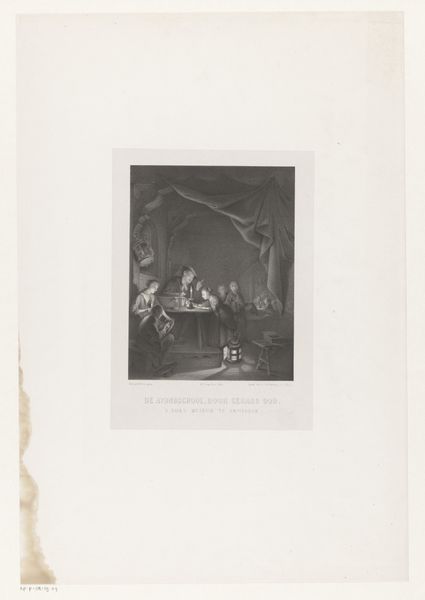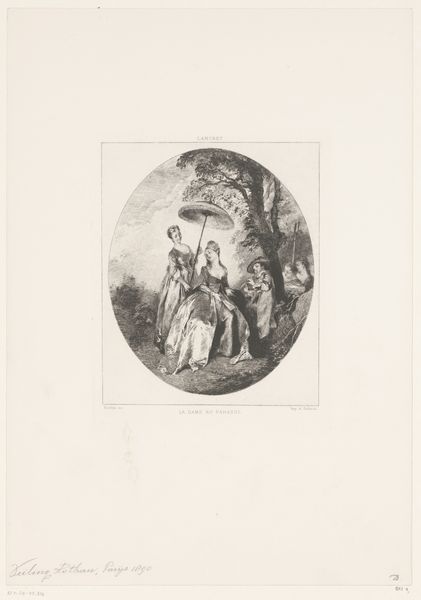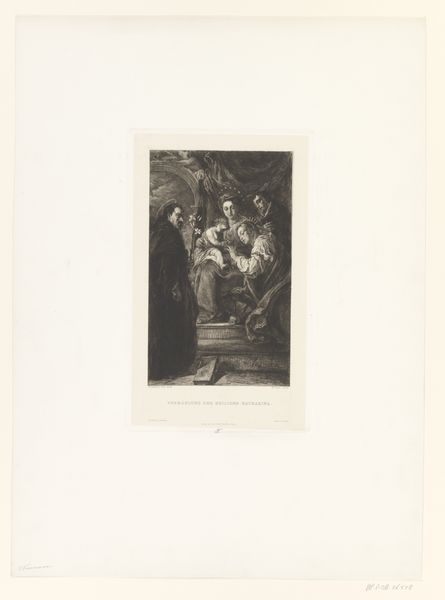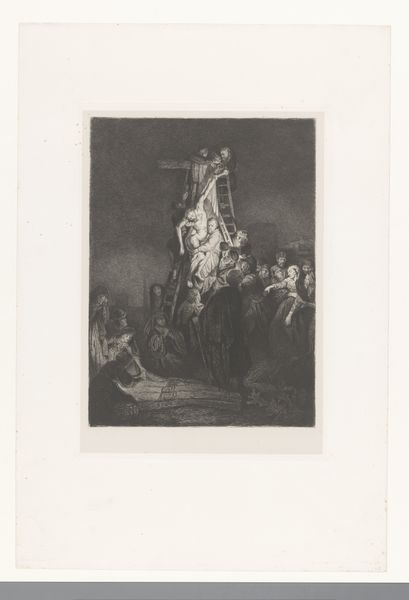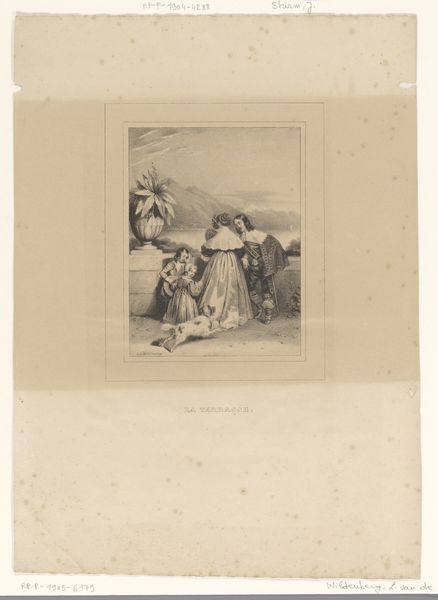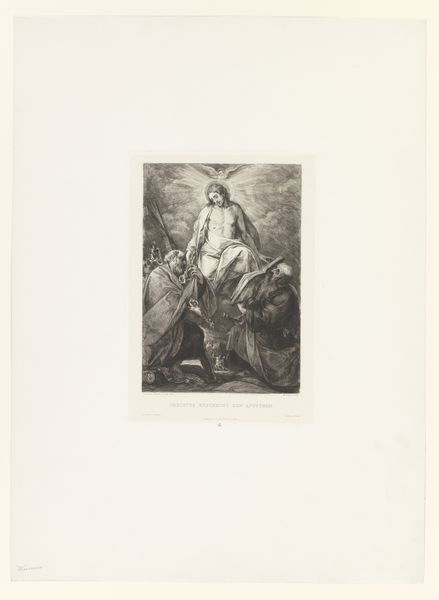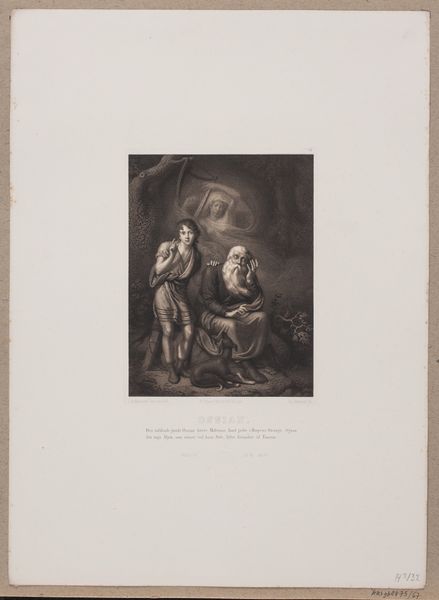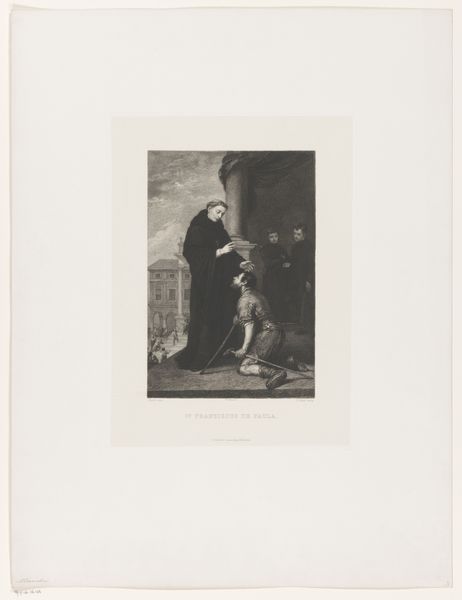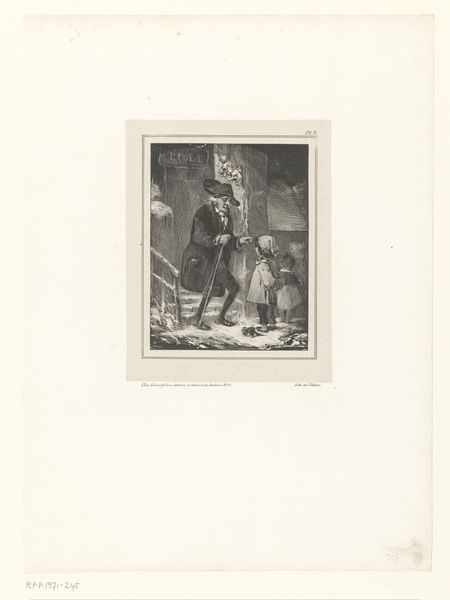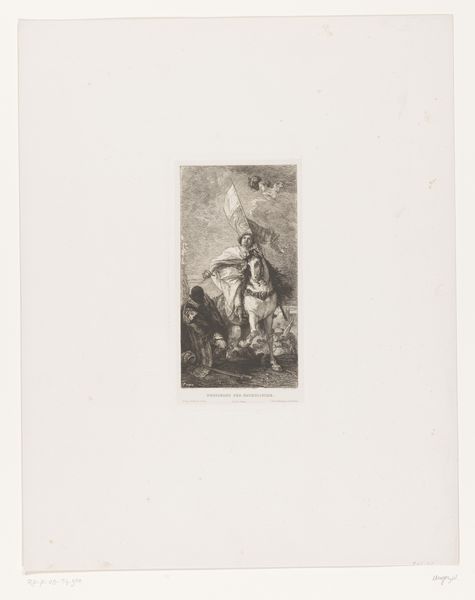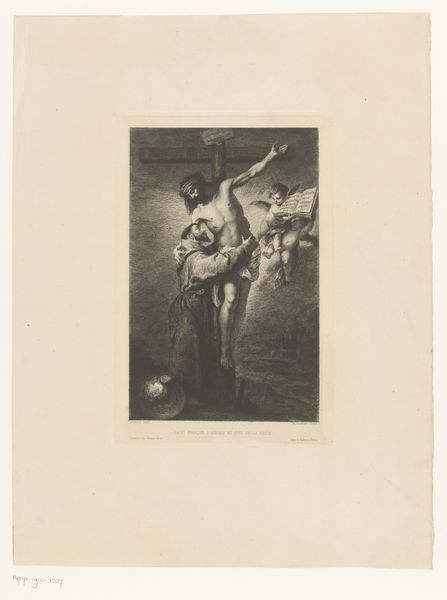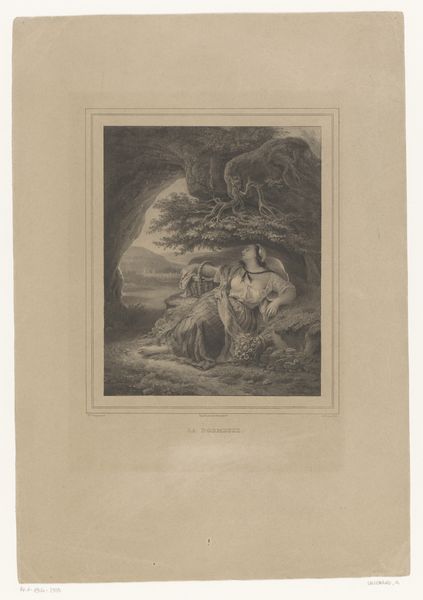
print, etching
#
portrait
# print
#
etching
#
landscape
#
figuration
#
history-painting
#
academic-art
Dimensions: height 375 mm, width 283 mm
Copyright: Rijks Museum: Open Domain
Curator: This print, titled "Kruisafneming", which translates to "Descent from the Cross," is by Johann Leonhard Raab, likely created sometime between 1835 and 1899. It is an etching. What's your first take? Editor: Wow, that's intense. It's incredibly dramatic, the way the figures are clustered around the body. All that black and white…it really heightens the emotional weight. Almost theatrical, don’t you think? Curator: Absolutely. The composition itself is loaded. Considering the historical context, works like this functioned to instill very specific beliefs about sacrifice and redemption, reinforcing social hierarchies within religious frameworks. This historical reading helps illuminate the work's function. Editor: You know, for me, it’s less about the dogma and more about that single suspended body. The pose—utter release and vulnerability, it feels so incredibly human. How heavy that lifeless form is as it’s handled by everyone… Curator: The physicality is certainly striking, especially given academic art's frequent tendency toward idealized forms. Editor: True. There’s this fascinating tension between the attempt to portray a sacred moment, yet failing—magnificently—to cover up the unglamorous reality of death. Do you feel that’s right? Like how far does "academic art" dare to go? Curator: A good point. Consider that the image served a didactic purpose; the intent would've been to trigger not just grief, but also awe and submission. So while a modern perspective might fixate on the human, it might be missing part of the story, focusing on how people, even in those moments of despair and anguish, maintained rigid social structure. Editor: Well, isn't it interesting how our own experiences inevitably shade how we perceive the narrative depicted in art? This makes art immortal and the closest companion one could have... Curator: Precisely, each viewer engages with artwork from their own situated perspective, influenced by culture and theory. Editor: Definitely food for thought, but for now, I’m still caught up in the raw feeling.
Comments
No comments
Be the first to comment and join the conversation on the ultimate creative platform.
